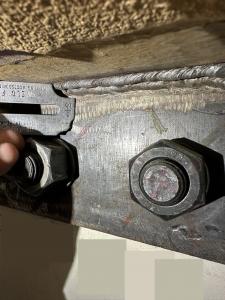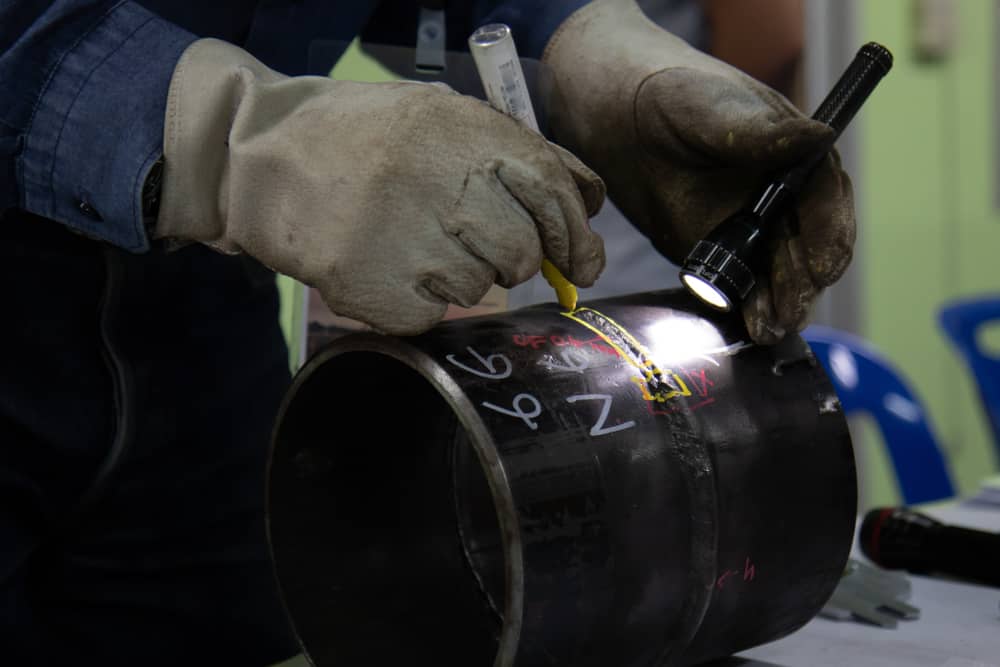How Welding Inspection Racine Makes Sure Safety And Security and Conformity
Wiki Article
Innovative Approaches to Fillet Weld Examination and Testing: Enhancing Weld High Quality and Conformity Specifications
In the realm of welding, the quality and stability of fillet welds play a crucial duty in ensuring the architectural sturdiness and dependability of various industrial components. With the constant drive for improved effectiveness and conformity with stringent criteria, the exploration of innovative strategies to fillet weld assessment and testing has become necessary.Advanced Non-Destructive Testing Methods
Utilizing state-of-the-art modern technologies, progressed non-destructive screening approaches play a crucial role in making sure the integrity and top quality of fillet welds. These techniques, such as phased range ultrasonic screening (PAUT) and magnetic fragment testing (MPT), offer comprehensive insights into the weld's inner framework without creating any kind of damage to the material. PAUT, as an example, utilizes multiple ultrasonic aspects to inspect the weld from numerous angles, supplying a detailed visualization of prospective problems like lack of combination or fractures.By employing these sophisticated non-destructive screening strategies, weld examiners can properly evaluate the quality of fillet welds, making certain conformity with market standards and regulations. The capacity to identify flaws early on not just improves weld quality but additionally protects against pricey rework or failings in structural stability, underlining the value of these cutting-edge testing approaches in welding assessments.
Robotics and Automation in Inspection
The assimilation of robotics and automation has revolutionized the inspection procedure for fillet welds, improving efficiency and accuracy in high quality assessment. Robotics provide exact control and repeatability in inspecting welds, making sure consistent and reliable results. Automated systems can be programmed to adhere to details inspection paths, making certain comprehensive protection of welds and decreasing the danger of human mistake.Robot evaluation systems geared up with advanced sensing units can detect and measure weld attributes with high accuracy, offering detailed information for evaluation. These systems can determine problems such as splits, lack of fusion, and porosity, allowing timely rehabilitative activities to be taken. In addition, robotics and automation enable real-time data collection and evaluation, giving immediate responses to operators and helping with quick decision-making procedures.
Furthermore, the usage of robotics and automation in fillet weld examination enhances total productivity by minimizing inspection times and boosting assessment throughput. By improving the examination process, suppliers can make sure weld high quality and compliance requirements are satisfied efficiently, ultimately resulting in set you back financial savings and boosted item high quality.
Utilizing Artificial Intelligence for Evaluation
Man-made intelligence plays a critical duty in boosting the efficiency and accuracy of analysis in fillet weld examination processes. AI formulas can quickly process huge amounts of data from weld assessments, detecting issues or inconsistencies that may be testing to identify with the nude eye - Welding Inspection Racine.Additionally, AI systems can gain from previous inspection information, continually improving their capacity to recognize prospective issues and discrepancies in fillet welds. This adaptive knowing capability enhances the total top quality control process, decreasing the probability of human mistake and making sure that welds meet the required standards. By incorporating expert system right into fillet weld analysis, industries can accomplish higher levels of performance, uniformity, and conformity in important source their evaluation methods.
Portable Devices for On-Site Evaluation
 Enhancing area inspection effectiveness, the fostering of portable tools reinvents on-site evaluation processes for fillet welds. These devices provide versatility and ease, allowing inspectors to conduct detailed assessments in numerous areas, consisting of difficult or remote environments. Mobile tools such as ultrasonic testing gadgets, magnetic fragment examination devices, and digital radiography systems supply real-time information and high-resolution imaging capabilities, making it possible for quick decision-making and prompt comments on weld top quality.
Enhancing area inspection effectiveness, the fostering of portable tools reinvents on-site evaluation processes for fillet welds. These devices provide versatility and ease, allowing inspectors to conduct detailed assessments in numerous areas, consisting of difficult or remote environments. Mobile tools such as ultrasonic testing gadgets, magnetic fragment examination devices, and digital radiography systems supply real-time information and high-resolution imaging capabilities, making it possible for quick decision-making and prompt comments on weld top quality.One considerable advantage of portable tools is their capacity to simplify examination procedures, decreasing downtime and enhancing total performance. Inspectors can easily deliver these devices to different job sites, getting rid of the demand for delivering hefty equipment or components to off-site facilities. Furthermore, the transportability of these tools advertises cost-effectiveness by minimizing transportation expenditures and accelerating assessment timelines.
Furthermore, the usage of mobile devices for on-site evaluation advertises aggressive quality assurance steps, as examiners can promptly recognize and resolve any prospective welding problems or inconsistencies. By integrating these innovative innovations right into on-site inspection practices, welding experts can make sure compliance with industry criteria and improve weld top quality, inevitably leading to improved structural honesty and safety and security in different welding applications.
Assimilation of Data Administration Solution
Having actually maximized on-site inspection processes through the application of portable tools, the following phase involves the seamless combination of information monitoring systems to even more boost effectiveness and data evaluation capabilities in fillet weld evaluation and screening. Welding Inspection Racine. By incorporating data administration systems into the inspection procedure, organizations can streamline data collection, storage space, and evaluation. This integration enables real-time tracking of weld quality, immediate recognition of defects, and prompt decision-making to remedy any problems that might arise during the inspection procedure
Data monitoring systems play a vital function in streamlining evaluation data, assisting in simple gain access to for accredited workers, and guaranteeing data honesty and safety and security. Through the integration of these systems, inspectors can create detailed records, track historic data for trend evaluation, and anonymous boost general process effectiveness. Additionally, the integration of data management systems makes it possible for smooth interaction in between different stakeholders associated with the evaluation process, cultivating cooperation and improving general quality control measures. Ultimately, the integration of information management systems offers to raise the standards of fillet weld examination and testing, ensuring conformity with sector guidelines and enhancing weld quality.
Conclusion
To conclude, innovative techniques to fillet weld examination and testing have significantly improved weld top quality and conformity standards. Advanced non-destructive screening approaches, robotics, automation, synthetic intelligence, mobile devices, and data administration systems have actually changed the way weld evaluations are carried out. By making use of these modern technologies, industries can make sure that welds fulfill the required high quality criteria and laws, ultimately improving overall effectiveness and security in welding procedures.
By using these innovative non-destructive testing techniques, weld examiners can precisely analyze the quality of fillet welds, making sure conformity with market criteria and laws. Portable tools such as ultrasonic testing gadgets, magnetic bit evaluation devices, and electronic radiography systems supply real-time information and high-resolution imaging like this capacities, enabling quick decision-making and prompt comments on weld high quality.
Having actually maximized on-site inspection processes through the usage of portable tools, the following phase involves the seamless assimilation of information management systems to better enhance performance and data analysis abilities in fillet weld examination and testing (Welding Inspection Racine). Eventually, the integration of information monitoring systems serves to elevate the standards of fillet weld inspection and testing, making sure compliance with market policies and improving weld top quality
 In final thought, ingenious methods to fillet weld evaluation and testing have considerably enhanced weld quality and compliance standards.
In final thought, ingenious methods to fillet weld evaluation and testing have considerably enhanced weld quality and compliance standards.Report this wiki page